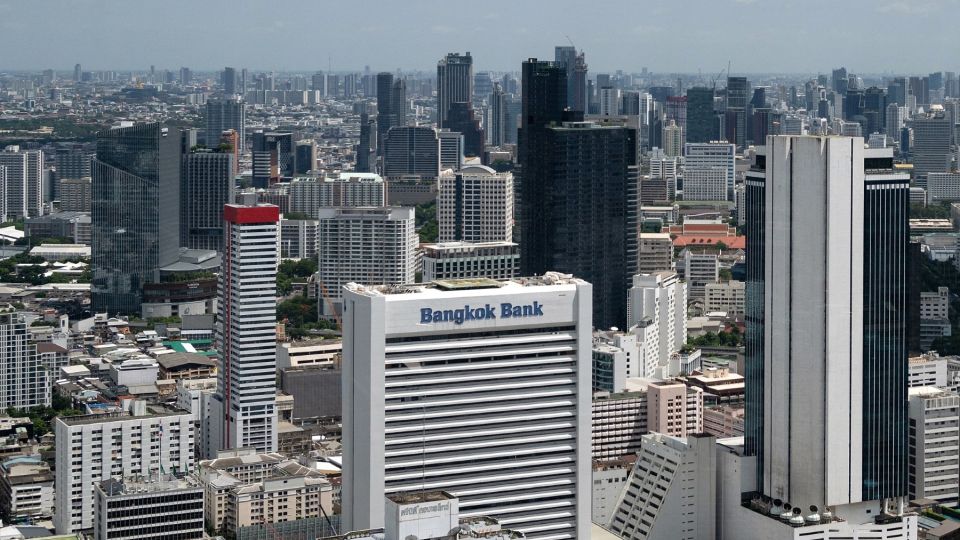August 13, 2025
BANGKOK – Once tipped to become Asia’s fifth economic tiger, Thailand is now grappling with stagnation, recording the slowest growth rate in ASEAN.
Over the past decade, GDP growth has averaged below 2%, well under its potential, earning the country the unenviable label of the “sick man of Asia” in urgent need of reform.
The World Bank reclassified Thailand as a lower middle-income economy (per capita income above US$1,036) in 1988, amid hopes it would follow Japan, South Korea, Taiwan and Singapore to become a newly industrialised nation.
But those ambitions were derailed by political turmoil and the 1990s economic crisis.
Kriengkrai Thiennukul, chairman of the Federation of Thai Industries (FTI), said the country must overhaul its economic and industrial structures to match global demand, citing several key factors behind its decline from would-be tiger to regional laggard.
- Slow adaptation to global change – Thailand has failed to keep pace with global shifts, especially technological disruption. Digital transformation has upended traditional industries reliant on OEM (original equipment manufacturing) production. Core exports have been displaced by new innovations, such as electric vehicles (EVs), which are replacing combustion-engine cars and rendering tens of thousands of locally produced auto parts obsolete.
- Rising production costs – Continuous increases in the minimum wage have eroded Thailand’s cost advantage over neighbours like Vietnam and Indonesia, where labour and energy costs remain lower.
- An ageing society – Thailand’s transition to a fully aged society has led to a shortage of working-age labour, directly impacting labour-intensive industries. The demographic shift has also pushed up healthcare costs, adding pressure to public and private finances.
- The middle-income trap – Thailand has been stuck in the middle-income bracket for over 30 years, largely due to its OEM-dependent economy. To reach high-income status, defined as about US$13,925 (roughly 490,000 baht) per capita annually, it must more than double its current per capita income of over US$6,000 (about 250,000 baht).
- Household debt – Thai household debt has soared to over 90% of GDP, or 104% when informal debt is included. This has severely constrained consumer spending and poses a major obstacle to further wage increases.
Kriengkrai outlined urgent measures needed to stimulate Thailand’s economic growth.
- Industrial transformation – Shift from traditional industries reliant on OEM to ODM (original design manufacturing), while building homegrown brands to enhance product value. Incorporating automation and AI into production will improve efficiency and competitiveness.
- Move towards future industries – The government should prioritise and invest in New S-Curve sectors where Thailand has a competitive edge, such as the BCG (Bio-Circular-Green) economy. This includes developing high-value products from the country’s rich biodiversity, creating new income streams and opportunities.
- Legal and bureaucratic reform – Urgently repeal more than 100,000 outdated laws to reduce hidden costs and make it easier to do business.
- Systematic resolution of household debt – Introduce measures to assist indebted households, such as debt restructuring negotiations or partial debt write-offs (haircuts). At the same time, raise incomes in agriculture and emerging industries to boost purchasing power and sustainably reduce the household debt-to-GDP ratio.
“If we do not move swiftly to overhaul our economic structure, Thailand will become an importer of goods from neighbouring countries rather than a producer, and our industrial base will disappear,” Kriengkrai warned.
The Joint Standing Committee on Commerce, Industry and Banking (JSCCIB) has also proposed medium-term strategies to strengthen the economy.
- Identify high-potential markets – Target large markets such as Africa and high-purchasing-power regions like the Middle East.
- Accelerate free trade talks – Conclude free trade agreements with new partners, such as the Thailand–EU FTA, to give Thai businesses a competitive edge.
- Strengthen domestic supply chains – Build resilience from upstream industries to support greater use of local content, mitigate transshipment tariff risks, and attract foreign direct investment (FDI).
Thailand should adopt fresh strategies to strengthen its competitive edge.
- Restructuring industry, especially SMEs – Promote the production of high-value-added goods driven by research, development and innovation, while raising product standards in line with a transition towards more sophisticated manufacturing.
- Improving productivity and cutting costs – Leverage technology to enhance efficiency and upskill or reskill the workforce to meet evolving industry needs.
- Defining priority sectors – Identify and promote sectors that align with the country’s long-term strategic objectives.
Kriengkrai said Thailand must also capitalise on opportunities arising from US trade policy to enhance the long-term competitiveness of the private sector, particularly SMEs. This would involve industrial restructuring, clearly defining priority sectors in line with national strategy, and upgrading production processes throughout the supply chain.
Strengthening upstream industries to increase local content, improving productivity, reducing costs, adopting technology and innovation, and enhancing the skills of both Thai and migrant workers would raise real economic value. Achieving this, Kriengkrai stressed, requires close cooperation between the public and private sectors.


